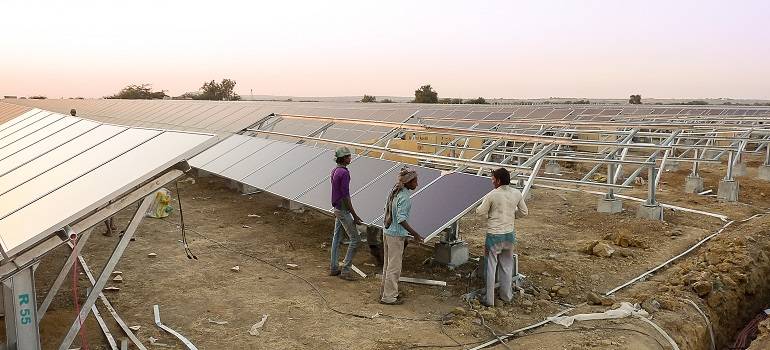
ICRA on Tuesday said that it has estimated 7-7.5 GW solar power capacity addition during the current financial year, which includes 1 GW of rooftop solar.
“The domestic solar power capacity addition is expected at around 7 GW to 7.5 GW (including around 1 GW of rooftop solar capacity) in FY 2020 as per an ICRA note, based on tendering and awards of projects in the last 12-15 months,” the rating agency said in a statement.
By contrast, solar capacity addition is estimated to have remained subdued at around 6 GW to 6.5 GW in the financial year 2018-19 due to weak trend in award of solar projects in the calender year (CY) 2017, according to the statement.
Girishkumar Kadam, sector head and vice-president (corporate ratings), ICRA, said in the statement, “Tendered project awards for solar PV (photovoltaic) projects during CY 2018 stood at about 11 GW against 4.5 GW in CY 2017, providing a healthy pipeline for capacity addition over the next 2-year period.”
He also said nearly 56 per cent of the capacity auctioned in 2018 has been accounted for by central agencies, such as Solar Energy Corporation of India and NTPC Ltd, with the balance by state nodal entities and discoms under various state-level programmes.
Apart from the projects awarded through the bid route, ICRA expects about 1 GW to be added through open access or group captive route and grid-connected rooftop, with these additions being facilitated by favourable solar policies for open access route in a few states.
As for tariff, with a decline in PV module price level during 2018 and aggressive bidding by independent power producers (IPPs), the weighted average solar bid tariff during 2018 remained at Rs 2.73 a unit as against Rs 3.01 a unit in 2017 and Rs 5.01 a unit in 2016.
In this context, the viability of such tariffs critically hinges on timely execution of the project as per the PPA timelines, availability of debt with longer tenures at competitive funding cost and the ability of the project developers to keep the cost of modules within the budgeted levels, it added.
There have also been a few favourable regulatory orders for solar IPPs by central power regulator CERC on GST relief in November 2018 and by state regulator SERC in Maharashtra in February 2019, for allowing impact of safeguard duty under change in law for the affected developers. However, timely implementation of these orders remains to be seen and the same remains a key monitorable for the affected IPPs, it said.
Based on the performance analysis of ICRA-rated solar portfolio, almost 60 per cent of the rated capacity has shown the average plant load factor (PLF), or capacity utilisation, in the range of 19 to 21 per cent and 14 per cent of the rated capacity witnessed PLF levels of more than 23 per cent.
PLF performance above 23 per cent pertains to mainly project SPVs (special purpose vehicle) which have achieved commercial date of operation over the past two to three years, with direct current-to-alternate current (DC:AC) ratio varying between 1.2 to 1.4 times.
“Nonetheless, ability of the project developers to ensure prudent operations and maintenance practice and module quality so as to maintain the PLF within the desired level or as per the declared PLF norms under PPA (power purchase agreement) remains critical from the credit perspective,” Kadam added.
Further, receivable cycle for majority of the rated portfolio remains within 30 to 90 days except for IPPs with exposure to utilities in Telangana and Tamil Nadu.
With PTI Inputs
MORE TO READ:
DMRC gets 27 MW power from Rewa solar power plant, will gradually increase to 99 MW

